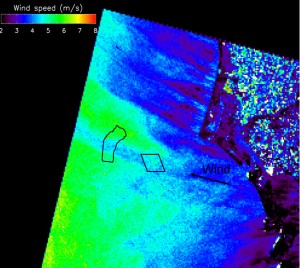 The main focus of this part of the project is to improve the fundamental understanding of wind turbine wakes and modelling.
The main focus of this part of the project is to improve the fundamental understanding of wind turbine wakes and modelling.
A number of standardized wake cases for large offshore wind farms will be looked at. These cases will not only provide a reasonable range of conditions likely to be experienced in offshore wind farms but also sufficient high-quality input data available in order to form a basis of a systematic evaluation and ultimately thorough models from wind farm scale models with straightforward parameterizations for wake behavior through CFD models.
The aim is to move to a quantitative suite of metrics for evaluation that define model performance in a comprehensive way. Key topics of the integration of models are reliability, operational and user aspects. For this reason, this part is focused on benchmarking of existing wake modes and in particular their ability for scaling up from wind farm to cluster scale. The benchmarking will take place on existing data from several large offshore wind farms including three twin wind farms where satellite radar data will be collected.

The R&D activities are divided into several tasks:
Task 1 - focus on wake model concepts for the wind farm scale
- Identify wake model performance of existing engineering and CFD models.
- Recommendations for industry user. An estimation of uncertainty at available models will be provided, depending on the characteristics of the site, e.g. size of the wind farm, inter-turbine distance, average prevailing wind velocity etc.
- Uncertainty from wake models on net efficiency. Based on the models comparison and the uncertainty analysis in WP3, guidelines for two mains issues will be provided to the industry.
Task 2 - Attention to wake model concepts for the cluster scale
- Identify wake model performance for cluster scale wind farm using mesoscale models - The work will focus on using various mesoscale models, with and without coupled wave parameterizations. The testing will be done using remote, sensing observations from satellite radar and ground-based wind lidar from large offshore wind farms, and from island ‘proxy’ cases.
- Uncertainty from wake models on net efficiency - The challenge is to apply the models for wind farm clusters, and to estimate the uncertainty arising from the collection of physical conditions.
- Recommendations for industry user - Provide hypothetical recommendations on recent planning activities but still try to make them as far as possible realistic.
Task 3 - Prepare coupled use – feedback loops – input/output automated
- The task is to match and pair wake models from wind farm to cluster. When taking into account that the main sources of uncertainty in the offshore wind farm cluster modelling stem from the large spatial extent of the applications at hand and the need of detailed representation of the flow within the individual wind farms.
Task 4 - Address wind farm challenges under the offshore conditions
- These challenges are basic topics, such as scour, wave climate, environmental monopoles vs. floating concepts, ocean current and as well wind-wave interactions.
Outcomes of the work will be reports on physical scale integration (couple use), and benchmark of wake models at wind farm and cluster scale.
Work package leader:
- Technical University of Denmark– DTU Wind Energy (DK)
Work package partners:
- CENER (E)
- Energy research Centre of the Netherlands - ECN (NL)
- Centre for Renewable Energy Sources – CRES (GR)
- CIEMAT (E)
- University of Porto – UPORTO (PT)
- The Trustees of Indiana University – IU (USA)
- Collecte Localisation Satellites SA – CLS (F)
- Statoil (NO)
- Hexicon (S)
- Carbon Trust (UK)
- Renewable Energy Systems Ltd – RES (UK)